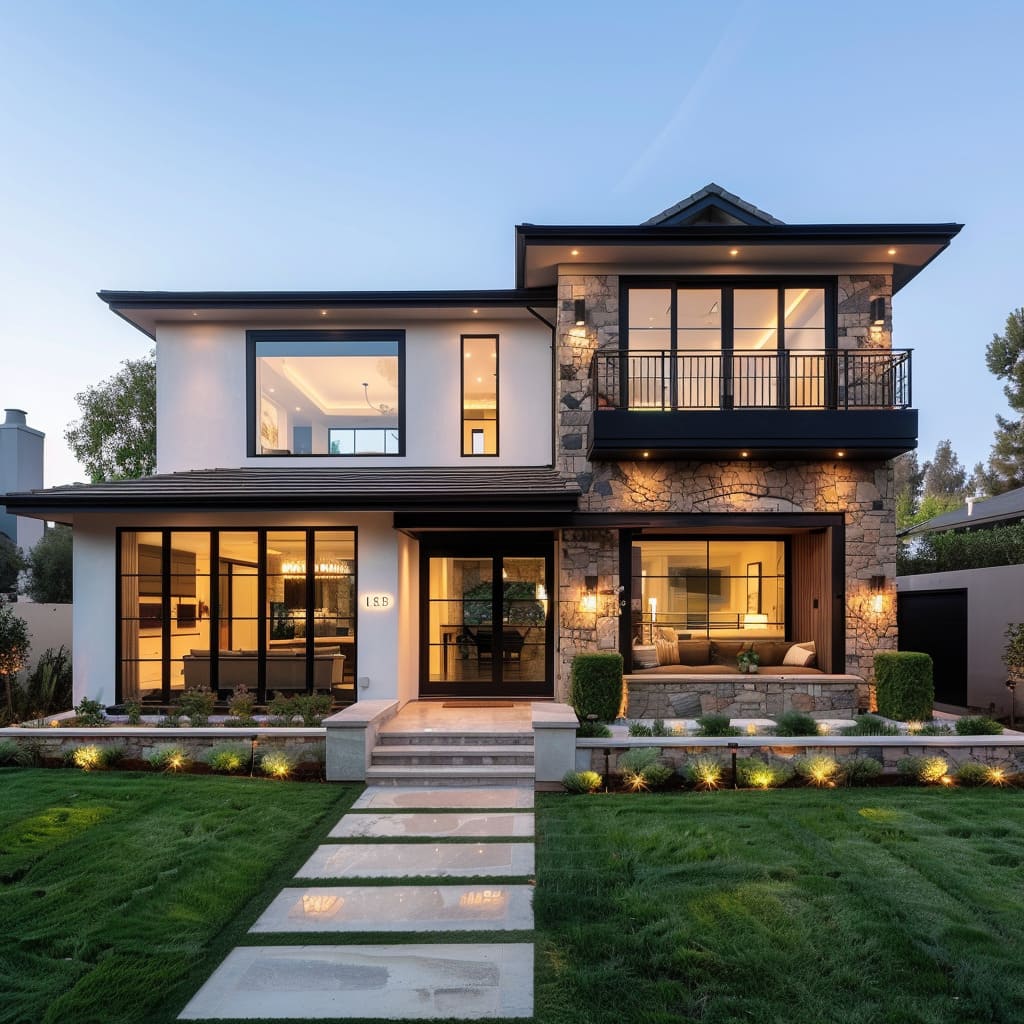Hallo, you! Welcome to an exciting journey into the future of living spaces. Today, we’re diving into the fascinating world of sustainable home design innovations that are shaping the way we live, now and for generations to come. As concerns about the environment continue to grow, more people are seeking ways to create homes that not only meet their personal needs but also minimize their impact on the planet.
According to sources havenblueprint.com sustainable home design is no longer just a trend; it’s becoming a crucial aspect of how we think about and approach our living spaces. In this article, we’ll explore some of the most innovative and sustainable design practices, materials, and technologies that are revolutionizing the concept of home. Whether you’re looking to build a new home, remodel an existing one, or simply make more eco-friendly choices, these ideas will inspire you to create a space that is both beautiful and sustainable. So, let’s get started on this journey towards a greener, more sustainable future!
Smart Home Technology and Sustainability
The integration of smart home technology is one of the most significant innovations in sustainable home design. These technologies not only enhance the convenience and comfort of our homes but also play a crucial role in reducing energy consumption and improving efficiency. Smart thermostats, for example, learn your schedule and adjust the temperature accordingly, ensuring that energy isn’t wasted when you’re not home. Similarly, smart lighting systems can be programmed to turn off when a room is unoccupied, or they can adjust their brightness based on natural light levels. Another exciting development is smart water management systems, which help conserve water by monitoring usage and detecting leaks. These systems can be integrated with other smart devices in your home, creating a cohesive, energy-efficient environment. The beauty of smart home technology is that it allows homeowners to monitor and control their energy use in real-time, making it easier to adopt sustainable habits and reduce their carbon footprint. As technology continues to advance, we can expect even more innovative solutions that will make our homes more sustainable and energy-efficient.
Renewable Energy Sources
One of the most impactful ways to make your home more sustainable is by incorporating renewable energy sources. Solar panels have become increasingly popular as a means of generating clean, renewable energy at home. With advancements in solar technology, panels are now more efficient and affordable than ever, making them a viable option for many homeowners. In addition to solar power, wind energy is another renewable resource that is gaining traction in residential settings. Small wind turbines can be installed on properties to generate electricity, especially in areas with consistent wind patterns. Geothermal energy is yet another renewable option that utilizes the earth’s natural heat to regulate home temperatures. By tapping into these renewable energy sources, homeowners can significantly reduce their reliance on fossil fuels and lower their energy bills. Moreover, many governments offer incentives and rebates for installing renewable energy systems, making it more accessible for people to invest in sustainable energy solutions. As we move forward, the integration of renewable energy in homes will play a crucial role in reducing our environmental impact and promoting a more sustainable future.
Green Building Materials
The choice of building materials has a profound impact on the sustainability of a home. Traditional building materials, such as concrete and steel, have a high environmental cost due to their energy-intensive production processes and significant carbon footprints. However, the rise of green building materials offers an eco-friendly alternative that is both durable and sustainable. One such material is bamboo, which is fast-growing and highly renewable. Bamboo can be used for flooring, cabinetry, and even structural elements in a home. Another sustainable option is reclaimed wood, which gives new life to wood salvaged from old buildings, barns, and other structures. Reclaimed wood not only reduces the need for new lumber but also adds character and history to a home. Additionally, materials like recycled metal, glass, and even plastic are being repurposed for use in home construction and design. These materials often come with the added benefit of being more energy-efficient in their production and having a smaller environmental footprint. As the demand for sustainable homes grows, so too does the availability of innovative, eco-friendly building materials that help reduce the impact on our planet.
Water Conservation Techniques
Water conservation is a critical component of sustainable home design, especially as water scarcity becomes a more pressing global issue. Innovative water-saving techniques and technologies are being incorporated into modern homes to help reduce water usage and promote sustainability. One such innovation is the use of greywater systems, which recycle water from sinks, showers, and washing machines for use in irrigation and toilet flushing. This not only reduces the demand for fresh water but also lessens the strain on wastewater treatment facilities. Low-flow fixtures, such as faucets, showerheads, and toilets, are another effective way to conserve water. These fixtures are designed to use significantly less water without sacrificing performance. Rainwater harvesting systems are also becoming more popular in sustainable home design. These systems collect and store rainwater for use in landscaping, gardening, and even household chores. By implementing these water conservation techniques, homeowners can significantly reduce their water consumption, lower their utility bills, and contribute to the conservation of this precious resource.
Passive Solar Design
Passive solar design is a sustainable architectural approach that leverages the natural energy of the sun to heat and cool a home. This design strategy involves careful consideration of a home’s orientation, window placement, and building materials to maximize the benefits of solar energy. For example, homes designed with large, south-facing windows can capture and store heat from the sun during the winter months, reducing the need for artificial heating. Conversely, the use of shading devices, such as overhangs or pergolas, can help block the sun’s rays in the summer, keeping the home cool. Thermal mass materials, such as concrete or stone, can also be used to absorb and store solar energy, releasing it slowly over time to maintain a consistent indoor temperature. By harnessing the power of the sun, passive solar design reduces the reliance on mechanical heating and cooling systems, leading to significant energy savings and a lower carbon footprint. As energy costs continue to rise and environmental concerns grow, passive solar design will likely become an increasingly important element of sustainable home construction.
Energy-Efficient Insulation
Insulation plays a vital role in maintaining a home’s energy efficiency by keeping it warm in the winter and cool in the summer. Traditional insulation materials, such as fiberglass, have been widely used for decades, but they are not always the most sustainable option. In recent years, more eco-friendly insulation materials have emerged, offering both superior performance and environmental benefits. One such material is cellulose insulation, which is made from recycled paper products, primarily newsprint. This type of insulation has a lower environmental impact compared to traditional options and provides excellent thermal performance. Another innovative insulation material is sheep’s wool, which is natural, renewable, and biodegradable. Wool insulation not only offers great thermal properties but also has the ability to absorb and release moisture, helping to regulate indoor humidity levels. Spray foam insulation, while not as eco-friendly in terms of material, is highly effective at sealing gaps and preventing air leaks, which can lead to significant energy savings. By choosing energy-efficient and sustainable insulation materials, homeowners can reduce their energy consumption and create a more comfortable living environment.






Leave a Comment